Manga: The Curious World of Japanese Comics
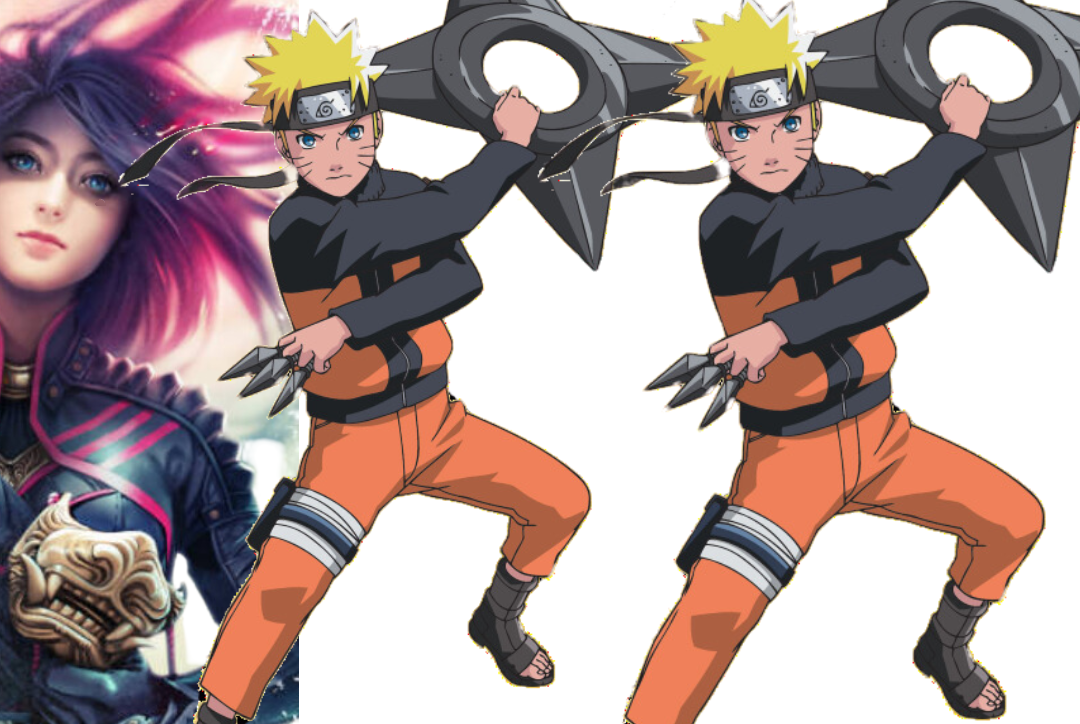
Manga is a famous form of Japanese art developed as a comic. For the Japanese, Manga is not just a source of entertainment but a core part of their culture. The word Manga (漫画) consists of two Kanji characters 漫, which means comics, and 画, which means drawing or painting.
In this article, we will discuss the meaning of manga, its origin and evolution, various types of manga, its global impact, the most famous manga to date, and the difference between manga and Western comics.
Meaning of Manga
If you are new to the world of manga, you may wonder what manga literally means. What is the meaning of the word manga?
The first kanji of the word Manga 漫, meaning comics or cartoons, also carries the conceptual meaning of “to overflow,” “to be unrestrained or carefree,” “to be aimless,” or “to be indiscriminate.” The second kanji, i.e. 画, means “drawing” or “painting.” So, the meaning of the word manga is “a story with pictures or comics in English.”
You may ask why a word associated with overflow, unrestrained, or carefree also means comics. Well, all these words suggest creativity or narrative being “unbound” by strict rules—hence the idea of manga as a medium for free-form, imaginative expression.
Simplicity of Manga Art and its Spread
Japanese Manga is usually in black-and-white colors. Sounds boring, huh? Something out of the 90s? It’s quite the contrary!
Manga’s beauty lies in its simplicity, and people embrace that. Although it is available in colored versions, most people prefer the monochromatic tone.
As of now, the world recognizes Japan in two ways. First, the very hard-working and disciplined inclined culture, and second, ‘Manga.’ And it is EVERYWHERE!
The presence of manga literally everywhere would be baffling to a foreigner, especially those who are not Manga fans. However, those who follow Otaku culture may still desire more.
Whether billboards, buildings, shops, trains, schools, cars, stationery items, food items, or everyday stuff, manga is engraved on everything.
Manga’s Origin – Not So New?
Considering its art style and storytelling, one would think that manga must have originated relatively recently, but that isn’t the case.
Manga’s foundations lead back to the 12th century when an anonymous artist produced hand-painted handscrolls depicting rabbits, monkeys, and other animals behaving like humans, meant for humor. Later versions and adaptations of the same were made in the 1500s.
The word ‘Manga’ was first used during the Edo period in 1814 by Katsushika Hokusai, the designer of the famous print ‘The Great Wave.’
He used the word Manga for his series of picture books called the ‘Hokusai Manga,’in which he sketched scenes from daily life. This is where the word ‘Manga’ was properly established.
Evolution of Manga
The first artist to describe their pictures as ‘manga’ in the modern sense was Ippyo Imaizumi. However, Kitazawa Yasuji, known as Kitazawa Rakuten established the first manga with four boxes and typed texts. Kitazawa’s manga became an inspiration to so many young artists that he became known as the father of modern manga.
It then underwent different phases that added depth and meaning to the stories.
Over time, this art became increasingly elaborate and complex. It was no longer just for humor but also for spreading ideas and creativity. Therefore, manga is now categorized into different types and genres, catering to its diverse audience.
The golden era of Manga came after the 1980s when its genres and adaptations peaked in creativity. In this era, static manga stories started getting life by turning into animations through anime series, movies, and video games.
Most Famous Japanese Manga
The “One Piece” Manga is the most famous and highest-selling manga ever, selling over 500 million copies. It was followed by ‘Gogol13’, which sold 300 million copies.
Third, fourth, and fifth place in the ranking of the best-selling manga to date, i.e., 2024, are held by the following Manga:
- Detective Conan, which sold 270 million,
- Dragon Ball Z, which sold 260 million,
- Naruto, which sold 250 million.
A major chunk of this success can be attributed to the fact that manga became mainstream in Japan in the 1980s.
Types of Manga – One for every taste and every mood?
The widespread popularity of manga can also be attributed to manga creators’ thoughtful approach to creating manga for people of different tastes. Of course, it wouldn’t have been possible if the love of manga had not attracted the creators of different tastes.
There are five types of manga: Shōnen, Shōjo, Seinen, Josie, and Kodomomuke. In addition to these five types, there are manga to satisfy specific tastes, such as horror and sports.
Let’s go into a bit more detail about these various types of manga:
Shōnen Manga – Courage, Action and Adventure
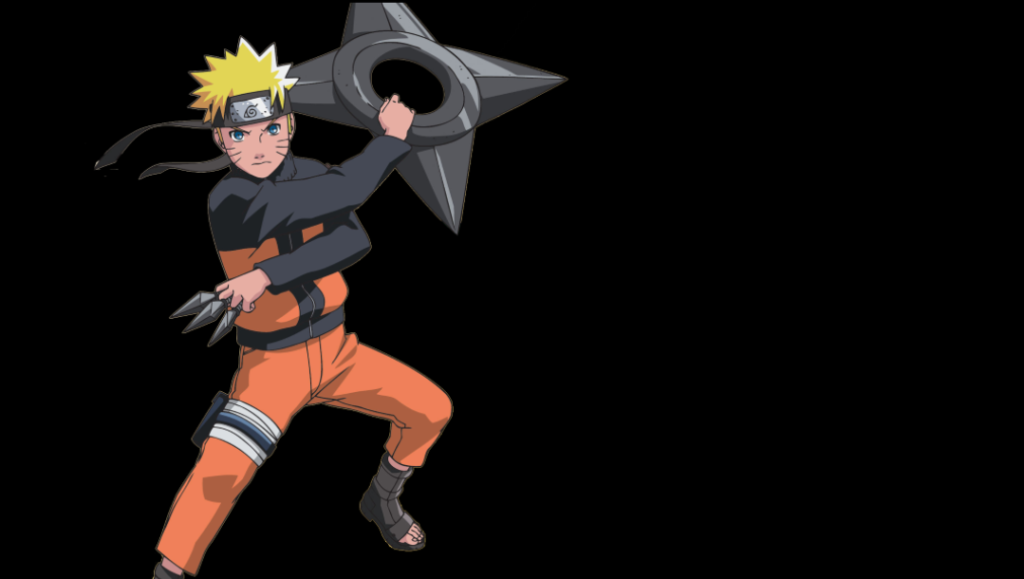
Shōnen manga is for the ones who are into the Hero stuff. Naturally, it attracts teenage boys more. This category of manga is action—and adventure-packed stories. These stories are not just about cool Ninjas, pirates, or gangsters but also about their way of life, the bonds they make, the paths they take, the struggles they face, and their personal growth.
Shōnen manga is about watching characters like Naruto Uzumaki go from an outcast and hated child to a ‘Hero’ who fights criminals and saves the entire village!
This manga never fails to captivate manga lovers who are interested in heroics, ambition, and courage to overcome their struggles.
You root for the guy hero of Shōnen manga not just because you feel bad for him but because you have seen his struggle and want him to have everything he desires in a world filled with magical beings and spells.
The kanji for Shōnen is “少年”. The character 少 (shou) means “little” or “few,” and 年 (nen) is the kanji for “year.” Together, 少年 refers to young boys or adolescents.
Shōjo Manga – Love and Drama
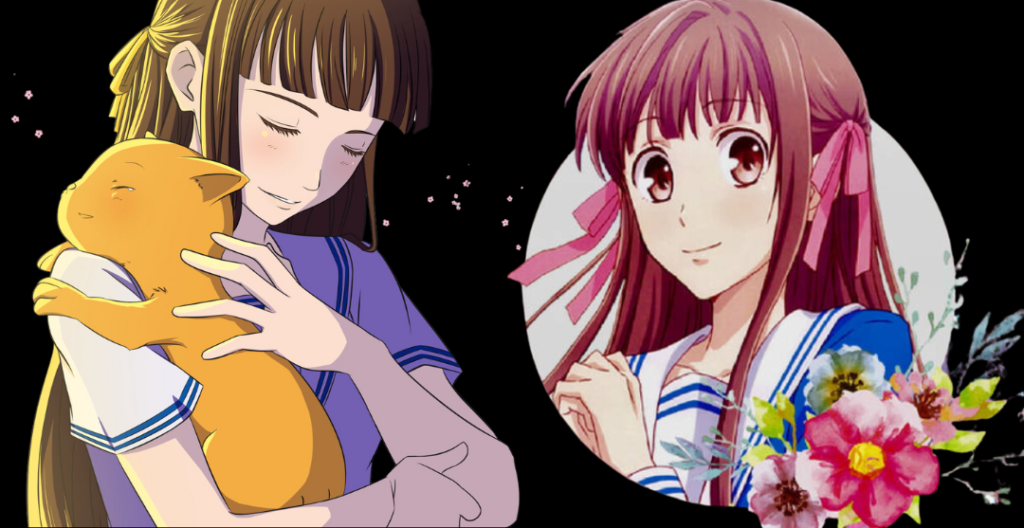
Not so adventurous and action-oriented, but a bit romantic, are you?
Well, who says that romance is not an adventure in itself?
Well, philosophy and jokes apart, Shojo will be just the right pick if you are a passionate romanticist.
They tend to focus more on love and relationships, not just romantic relationships but friendships.
The targeted demographic for Shōjo manga is teenage girls. But, well, let’s not bring in racism and gender-based preferences here.
A romance involves both genders, and unlike action, it’s a more common and easily relatable experience that speaks to people from all walks of life. After all, love and relationships are universal themes that everyone can connect with
Shojo will take you through all kinds of emotions, whether love, betrayal, a crush at first sight, bittersweet romance, or life-changing encounters.
A Shōjo manga is about romantic emotions and the struggles to keep your spirit alive and kicking.
Take it: Tohru Honda from Fruit Baskets wasn’t just able to find her place in this world but also helped many others do the same.
You will experience her emotions change with every new person she meets and how she knows what they are to her and empathizes with them. You will feel how a person set on spreading all her love into this world will have to face all its hate first.
The kanji for Shōjo is “少女”. The character 少 (shou) means “little” or “few,” and 女 is the kanji for woman or “age.” Together, 少女 refers to young girls.
Seinen and Josie – Stories for Grown-ups
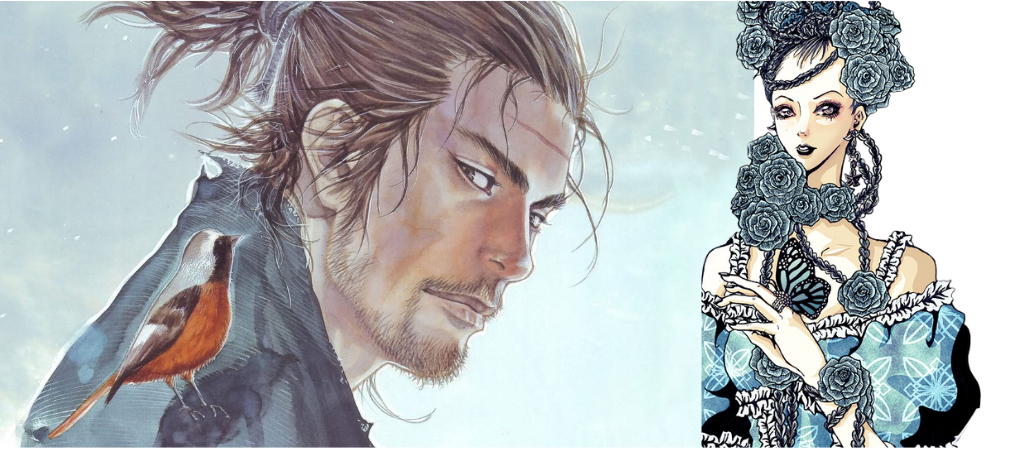
Stories where deeply rooted ideologies, idiosyncrasies of the society, philosophies, psychological tendencies, personal goals, elaborated historical events, and their significance all come into play are very complex, right?
They may be tough to read, and you feel like you will miss something if you misinterpret even one sentence.
But you get so attached to the story that you go, “WHAT HAPPENS NEXT!!!” after every page. You just can’t leave without knowing.
This is Seinen for you and Josie for you. These are manga for adults. They are kind of like elder siblings to Shōnen and Shōjo.
Seinen Manga
Seinen is targeted towards adult men, and Josie is more centered towards adult women.
They include stories of self-improvement, career challenges, and complicated relationships. Nana, for example, isn’t just about music or romance; it’s about life’s messy, beautiful complexity.
The most famous ones among Seinen are Berserk, Vinland, Saga, and Vagabond.
The kanji for seinen is 青年.
青 (sei) means “blue,” which, in this context, symbolizes youth or someone in the prime of life, while 年 (nen) means “year,” indicating a focus on a specific life stage.
Seinen manga often tackles more mature and complex themes, reflecting the interests and challenges of young male adults. These include work, relationships, and society. The focus here is on the transition from youth into adulthood rather than gender.
Josei Manga
On the other hand the kanji for josei for josei manga is 女性. Here 女 (jo) means “woman” or “female,” while 性 (sei) means “nature” or “gender,” together forming “female” or “woman.”
Unlike Shōjo, Josei manga typically explores more mature themes like romance, careers, relationships, and personal challenges, catering to the interests of adult women.
Some of the famous josei manga are Chihayafuru by Yuki Suetsugu, Nana by Ai Yazawa, Paradise Kiss by Ai Yazawa, and Nodame Cantabile by Tomoko Ninomiya.
Kodomomuke Manga
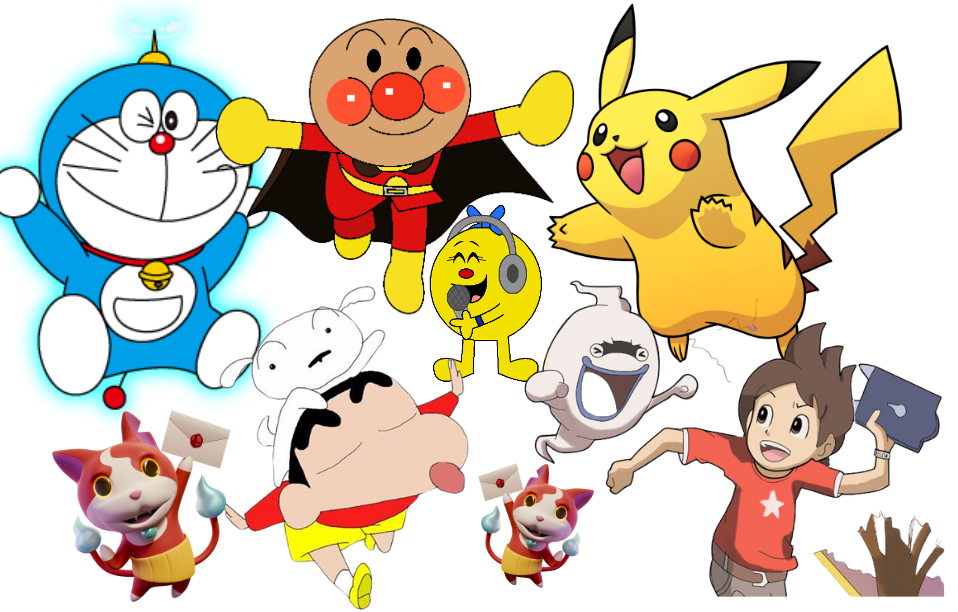
The word “kodomo” (子供) means “children,” and Muke (向け) means “for.” So Kodomuke manga or 子供向け 漫画 means “manga for children.”
As the name suggests, Kodomomuke manga is primarily for young children, typically from preschool to early elementary school age.
These stories often focus on simple themes like friendship, teamwork, and moral lessons, with easy-to-understand language designed to entertain and educate young readers.
The following are the most popular Kodomomuke manga series:
- Doraemon: A manga series about a robotic cat from the future who helps a young boy, Nobita, navigate life using futuristic gadgets.
- Anpanman: The word “Anpan” means a sweet roll filled with red bean paste. The Anpanman manga series is about the adventures of a superhero with a head in the shape of Anpan, who protects his friends from villains like Baikinman.
- Pokémon Adventures (Pokémon Special): The word Pokémon is a short form of Pocket Monsters. Pokémon Adventures manga series features the adventures of young Pokémon trainers.
- Shin-chan (Crayon Shin-chan): A manga series about a mischievous 5-year-old boy named Shin-chan and his everyday antics.
- Yo-Kai Watch: The Yo-Kai Watch manga series is about a young boy who gains the ability to see and interact with supernatural creatures known as Yo-Kai.
The adaptation of all these famous manga series into anime was natural, and those turned out to be more famous as kids love animations.
The Niche Genres
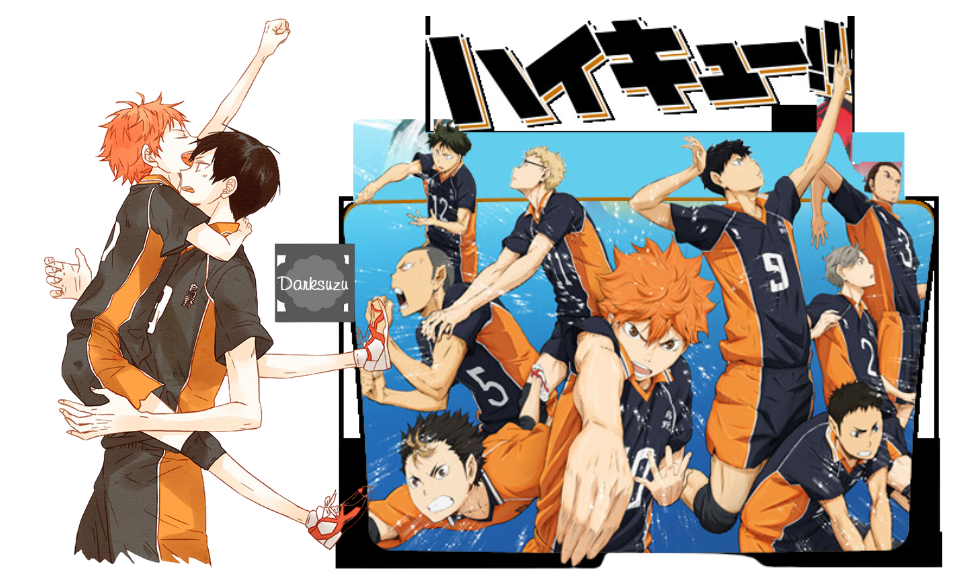
So, what’s left? Horror, Sports, Sci-fi, Fantasy, or something that will give you instant butterflies?
We have it all here. “Haikyuu!!”, “Slam Dunk” and “Blue Lock” will satisfy the sports enthusiast in you with the intense competitions, the tension at the last and most
critical moments, and the building of teams through it all.
We also have titles like “Uzumaki,” “PTSD Radio,” and “Parasyte” for those who enjoy a good scare and like the creeps. These works tap into the deepest fears through eerie, haunting artwork that lingers with you long after you’ve closed the book.
Complex manga stories like “Attack on Titan” and “Fullmetal Alchemist” will force you to rethink everything you believe in. Your philosophy, your way of life, and your integrity as a human being will all be on the line. In some way, it will reshape who you are as a person. And for some, it will answer a lot of questions about ethics and this universe.
Down in the dumps? There are also manga stories that lift the mood.
Have you ever heard of “Slice of Life”? “Horimiya is a cute love story that will give you butterflies and soothe your nerves. Komi Can’t Communicate is about a girl who is so anxious and nervous in social situations that she can’t speak yet dreams of making 100 friends. Her journey is simply adorable.
Manga Art Style – Monochromatic, seriously?
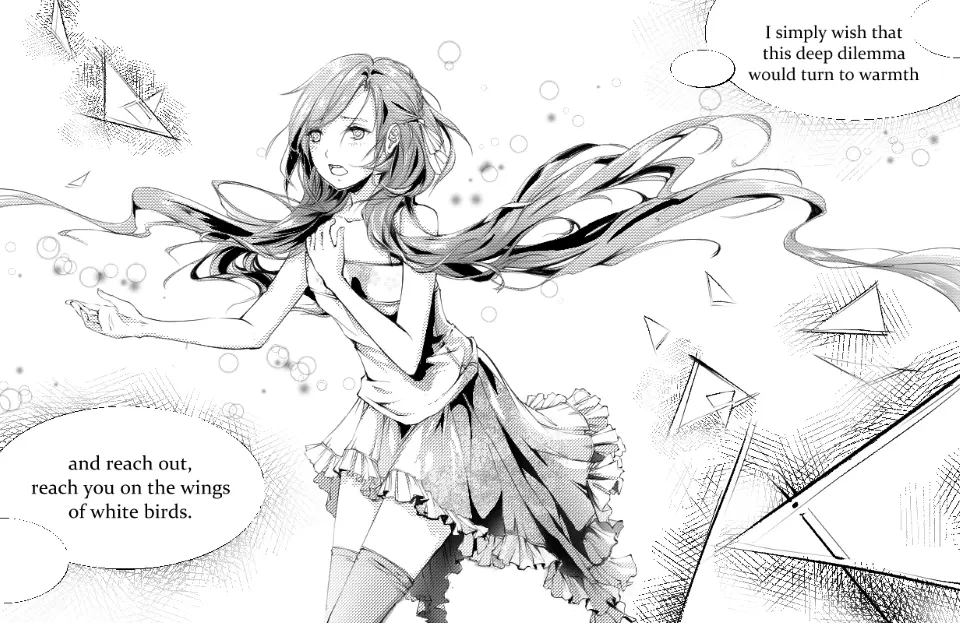
For Mangakas, as the Manga Artists are called, the monochromatic art style is a deliberate choice and not just a matter of tradition and cost.
Though some manga, especially the covers and special editions, are available in colored versions, most are still published in black and white. This presents a real challenge for the artist, though.
It is a big deal to convey so much emotion using only black and white, with just contrast, line work, and shading. Moreover, artists must also maintain a distinctive style so their work is instantly recognizable.
All of this, combined with the skillful use of negative space—areas left intentionally blank—creates a stark, dramatic aesthetic that can be compelling, powerful, or subtle, depending on its use.
And the backgrounds and pictures aren’t always perfectly detailed. The level of detail in the backgrounds and images varies based on what the mangaka wants to emphasize in each panel.
Manga Design – Some Thumb Rules, or Lack of Those
The level of detail depends on the flow of the narrative. When emotions are meant to be heightened, the details in the characters are more pronounced. On the other hand, the backgrounds become less prominent, highlighting the characters.
When we talk about facial expressions, mangakas follow a simple mantra, “The eyes say it all!”. The big, flamboyant, and explicitly detailed eyes are a result of this. Apart from this, they also use other iconography techniques to put more life into the character, like the following:
- A sweat drop on the character’s forehead signifies tension, stress, confusion, or embarrassment.
- A pooping vein might represent anger and frustration
- Spiraling or squiggly lines near a character’s face might show dizziness, illness, or distress
- Subtle and thin lines under the eyes on the cheeks represent blush or shyness
The reading pattern that manga follows is also particularly unique because it is deeply connected to the Japanese roots. We start on the right and move towards the left. The right-to-left direction is not just for the dialogues but also for the panels.
Manga is known for its innovative use of panel layouts, which are often more fluid and dynamic than Western comics.
Japanese manga doesn’t follow strict rules for the flow and design of the panels; rather, it shifts according to what is being portrayed. This allows the mangaka to better control the pace and tone of the narrative.
For example, large, full-page panels (or “splash pages”) might highlight a dramatic moment or stunning artwork.
Diagonal or overlapping panels can create a sense of movement, urgency, or chaos, making action scenes more immersive.
Small, close-up panels can focus on a character’s facial expression or a crucial detail, heightening the scene’s emotional impact.
Adaptations – we can’t stop at just books, can we?
With so much emotion and such a great connection, manga fans won’t be satisfied with just the printed pages, right? They want it to spill everywhere with TV shows, movie adaptations, soundtracks, and whatnot.
So, let’s have a look at manga adaptations apart from the books:
Anime – Bringing Manga to Life
Manga’s adaptations in anime (animations) are the most successful category, with 100s of millions of viewers worldwide, and the industry is valued at JPY 2.9 trillion (roughly $23 billion) as of 2022, which is expected to grow to $62.7 billion by 2032.
Anime TV series had around 24 episodes per season until a few years ago, but this norm has changed recently, with the number reducing to half. The seasons are divided depending on the number and length of each story arc and its significance to the plot. Obviously, we can’t forget the cost of production.
The quality of these series has also changed significantly over the years. Especially if we compare the anime from the early 2000s to today. The average production cost for one episode today starts from around $80k and goes as high as $150k for one episode of an anime.
If we look at the experience side of it, anime brings out the manga’s statistic images,
adding movements, soundtracks, and voice, taking the overall experience to a whole new level.
Famous Anime
Anime adds a whole new dimension to manga’s entertainment by adding animations to the still black-and-white drawings.
Long-running anime like One Piece (1000+ episodes and still going), Naruto (over 700 episodes), and Bleach (392 and still going), together commonly referred to as the big three, have had tremendous success and generated billions and billions of dollars in revenues.
Some other successful anime include, “My Hero Academia,” “Death Note,” “Attack on Titan,” “Jujutsu Kaisen,” “Demon Slayer,” “Fullmetal Alchemist,” “Kuroko’s Basketball,” “Neon Genesis Evangelion,” and “Tokyo Revengers.”
And it is not just a TV series. Anime can also be movies or films with a more focused narrative and a denser story.
Films can be produced independently, like the highly successful “Your Name” and “Weathering with You,” which earned over $400 million and $181 million worldwide, respectively. Alternatively, they can be made as part of an anime series like “One Piece Film: Red” and “Demon Slayer: Kimetsu no Yaiba – The Movie: Mugen Train,” or simply, “Demon Slayer: Mugen Train.”
Live Action
These live-action adaptations aim to capture the essence of their respective manga, translating the visual style and story into real-world settings with actors and practical effects. Some well-known adaptations include One Piece, Death Note, and Tokyo Ghoul. Even Hollywood has attempted this, with somewhat mixed results.
Video Games
Manga has expanded its audience by entering the world of gaming, with games like Dragon Ball Z: Budokai based on Akira Toriyama’s manga. This game allows players to engage in epic battles from the Dragon Ball Z universe, capturing the series’ fast-paced action.
Another example is Naruto: Ultimate Ninja Storm, which closely follows the story of the Naruto manga, offering players the chance to relive ninja battles and story arcs with detailed graphics and gameplay.
Merchandising
Manga and anime merchandise are so widely available that you can find almost anything with your favorite characters or series. Common items include T-shirts, shoes, caps, utensils, backpacks, wall décor, stickers, and figurines.
Global Impact – the world is watching, right?
Manga has never been just about making any story. It is about making stories that inspire people and spread meaningful thoughts.
Stories that force people to think beyond the horizons of their usual selves. Social issues like mental health, war, poverty, and discrimination are addressed.
For example, “A Silent Voice” by Yoshitoki Ōima emphasizes the struggles of a disabled girl who was bullied by a classmate in school days.
After years, when the guy realizes the consequences of his actions, he attempts to fix things the first chance he gets. It’s a story about redemption, courage, and how one sees the world differently when the burden of guilt and regret is lifted.
Some manga are bold in their critique of societal norms and issues.
For instance, “Akira” by Katsuhiro Otomo critiques the consequences of rapid urbanization, government corruption, and the potential dangers of unchecked scientific experimentation.
Such narratives encourage readers to think critically about similar issues in their own societies.
Japan’s rich culture is seamlessly reflected in the narratives of many manga series. Many of us otakus outside Japan recognize cherry blossom trees (Sakura, “桜”) for the beauty with which they are portrayed in manga.
For many, Japan is often symbolized by the image of delicate pink petals gently falling from the trees in a calming breeze.
Japanese culture and traditions are also beautifully highlighted in manga stories. From depictions of homes, table manners, and food to aspects of their general lifestyle, all of which have become known worldwide through manga.
The influence of manga extends to prominent figures like Elon Musk, who shared his favorite anime on Twitter; Ariana Grande, who has a tattoo of ‘Chihiro’ from Spirited Away; and Kanye West, who has expressed his love for Akira.
Differences Between Manga and Western Comics
Cultural characteristics always affect any art form. Considering this, it is very natural that there would be vast differences between Manga and Western comics. Let’s check how manga differs from Western comics:
Art Style
Japan is considered a very reserved society where people do not openly express themselves. However, such reservations are always cultural and are never a part of basic human nature.
Therefore, it is only natural that people find ways to express or see expression during their private moments. And, being with your manga is one of those private moments.
The above is the logical reason that manga typically features more detailed and expressive character designs, often with exaggerated facial features like large eyes. On the other hand, Western comics vary in style but are often more realistic or stylized differently depending on the artist or genre.
Moreover, more expressive pictures in manga limit the need for more text. Therefore, Japanese manga has less written content than Western comics, and in a way its like talking less, similar to the Japanese communication style.
Reading Direction
As we mentioned earlier, manga is read from right to left, both in terms of the page layout and within individual panels. Western comics are traditionally read left to right, which is the standard practice in most Western and other languages.
Format and Structure
Manga is usually serialized in black-and-white weekly or monthly magazines and later compiled into volumes called tankōbon. Western comics are often released as individual full-color issues with shorter individual stories, even when the central characters are the same, and then collected into trade paperbacks.
Themes and Genres
While both manga and Western comics cover a wide range of genres, manga tends to explore more niche topics and genres like slice-of-life, romance, and sports alongside popular genres like action and fantasy. Western comics are historically more focused on superhero narratives, though this has diversified in recent years.
Target Audience
Manga is categorized into specific demographic groups, such as shōnen (for young boys), shōjo (for young girls), and seinen (for adult men). Western comics are typically broader in terms of the targeted audience’s age categories, with a historical focus on children or teens, though adult comics are becoming more common.
Conclusion – is the future bright?
In conclusion, manga is much more than ink on paper—it’s a living, breathing force that connects people across continents, cultures, and generations.
These stories, filled with vibrant characters and raw emotions, draw audiences in, making them laugh, cry, and reflect on life’s deeper mysteries.
Japanese manga explores themes like love, loss, justice, and identity through its unique lens, offering us a richer understanding of the world.
As manga continues to evolve, its influence will only grow, becoming further woven into the fabric of global culture. It’s shaping not just the worlds of comics and animation but also how we view ourselves and each other.
Whether through unforgettable characters, thought-provoking themes, or the sense of community it creates, manga demonstrates that storytelling is a powerful, universal language capable of touching hearts, sparking imaginations, and bringing the world closer together.

Vishay Bajaj wears many hats. A fan of manga and anime, and therefore Japan, he is an artist, musician, and writer.
Vishay is currently pursuing his International Masters degree in Business Management from SDA Bocconi, Italy’s Asia Center, and is expected to receive his M.B.A. in 2025. He is also a Content Curator of TedxBocconiUMumbai.
